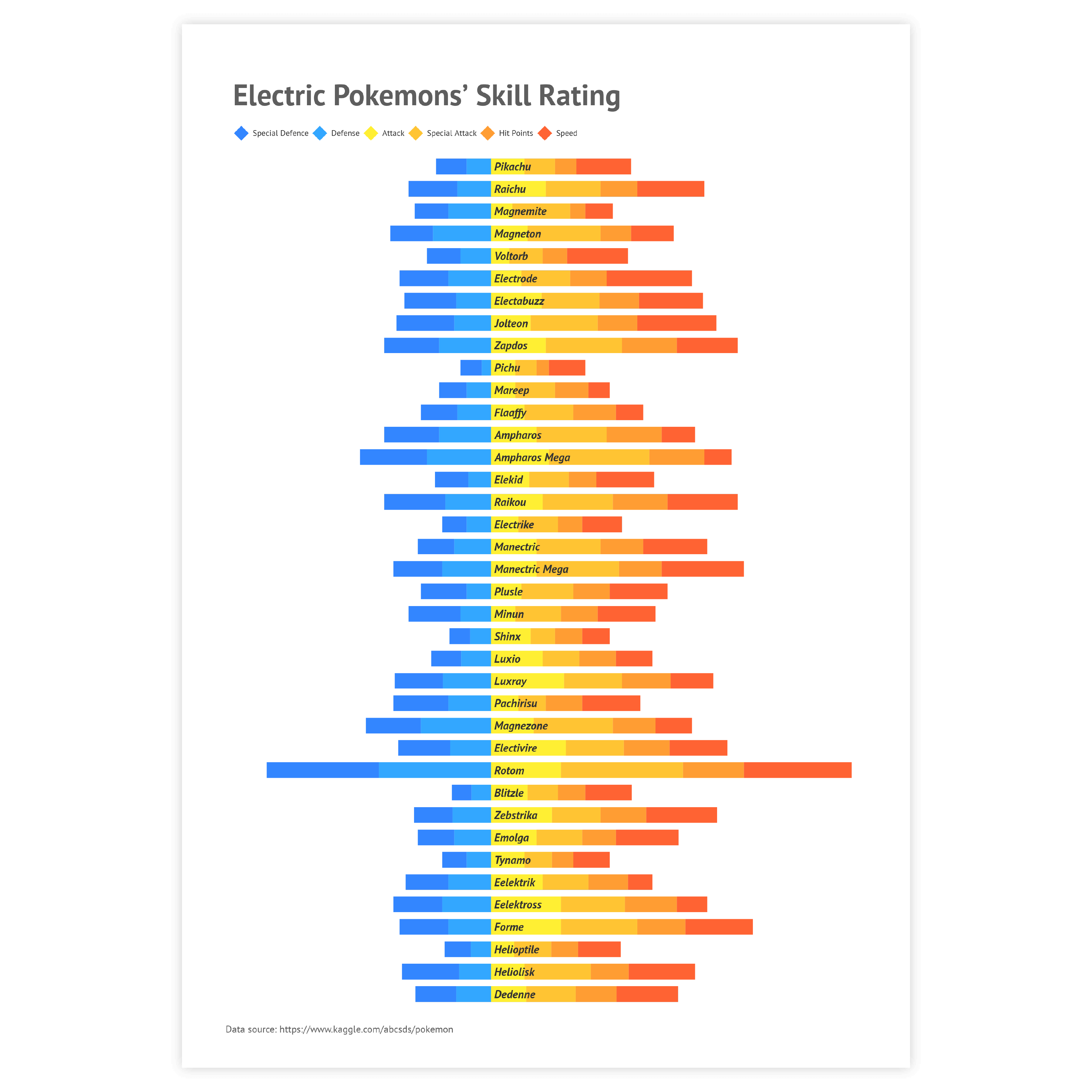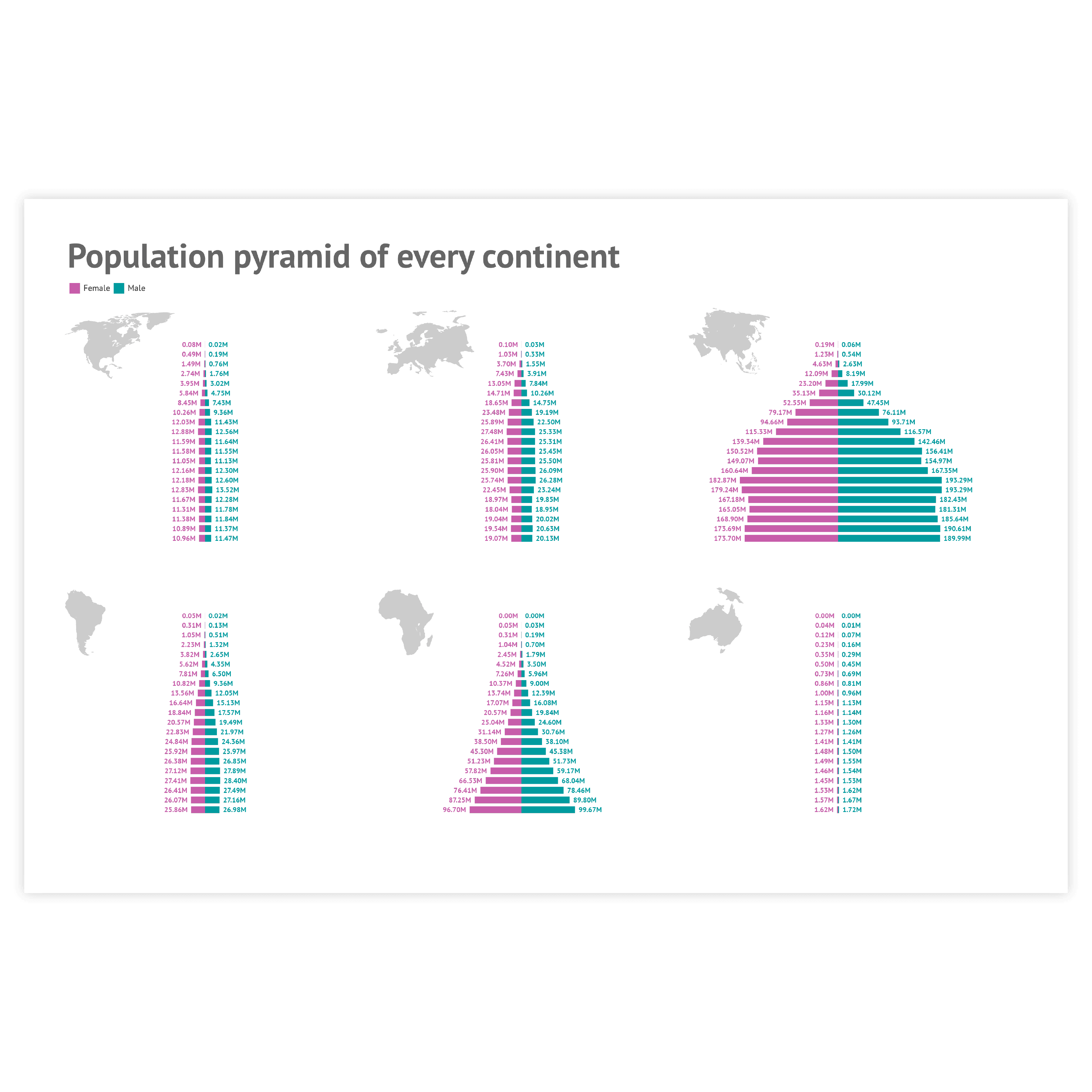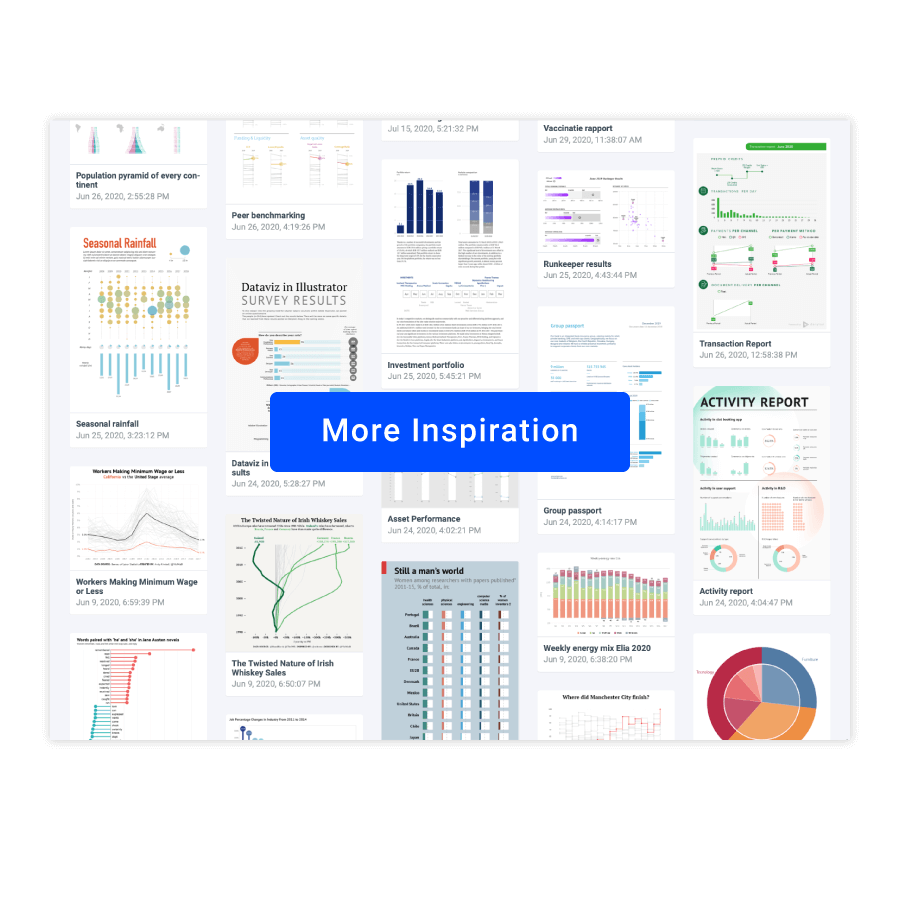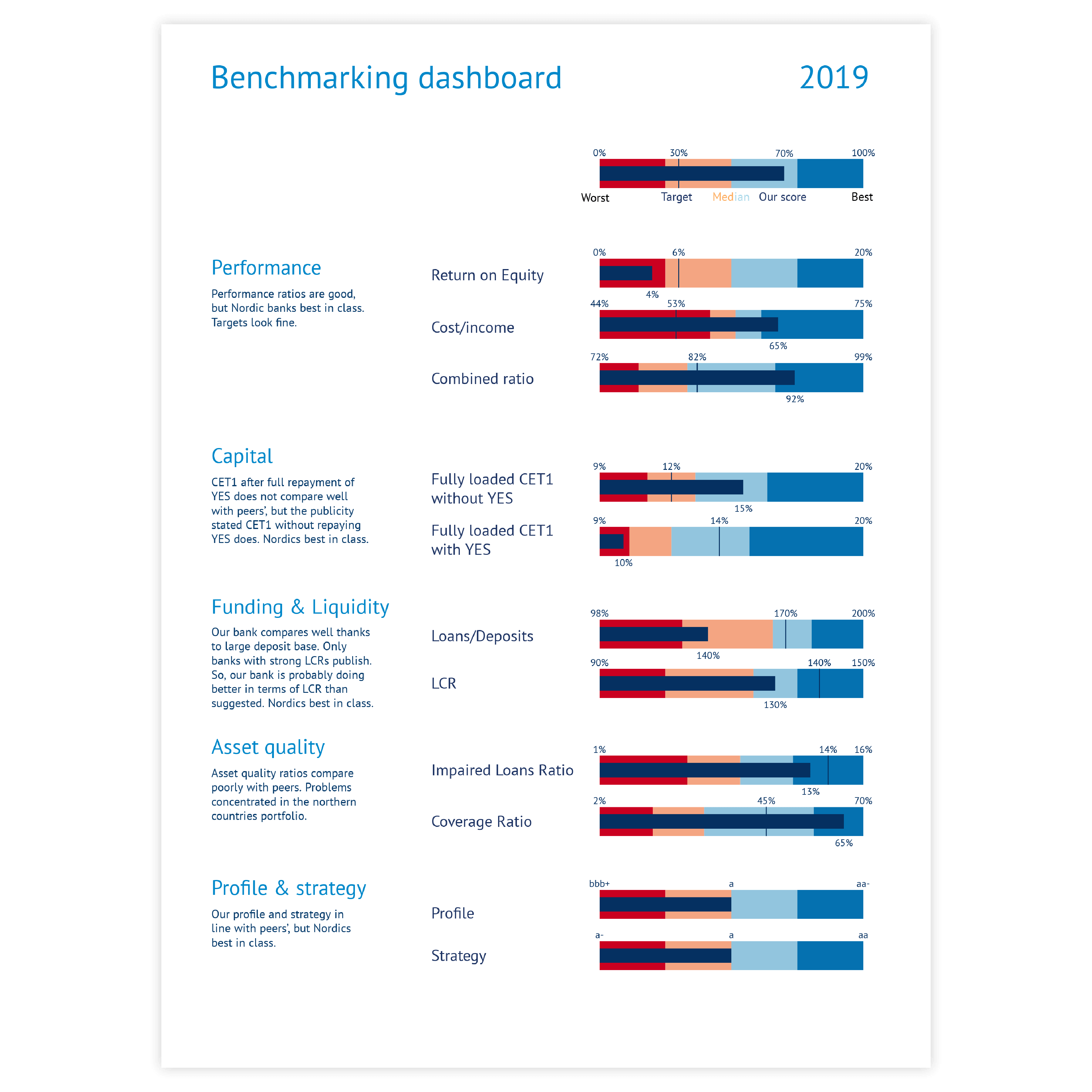Stacked bar chart
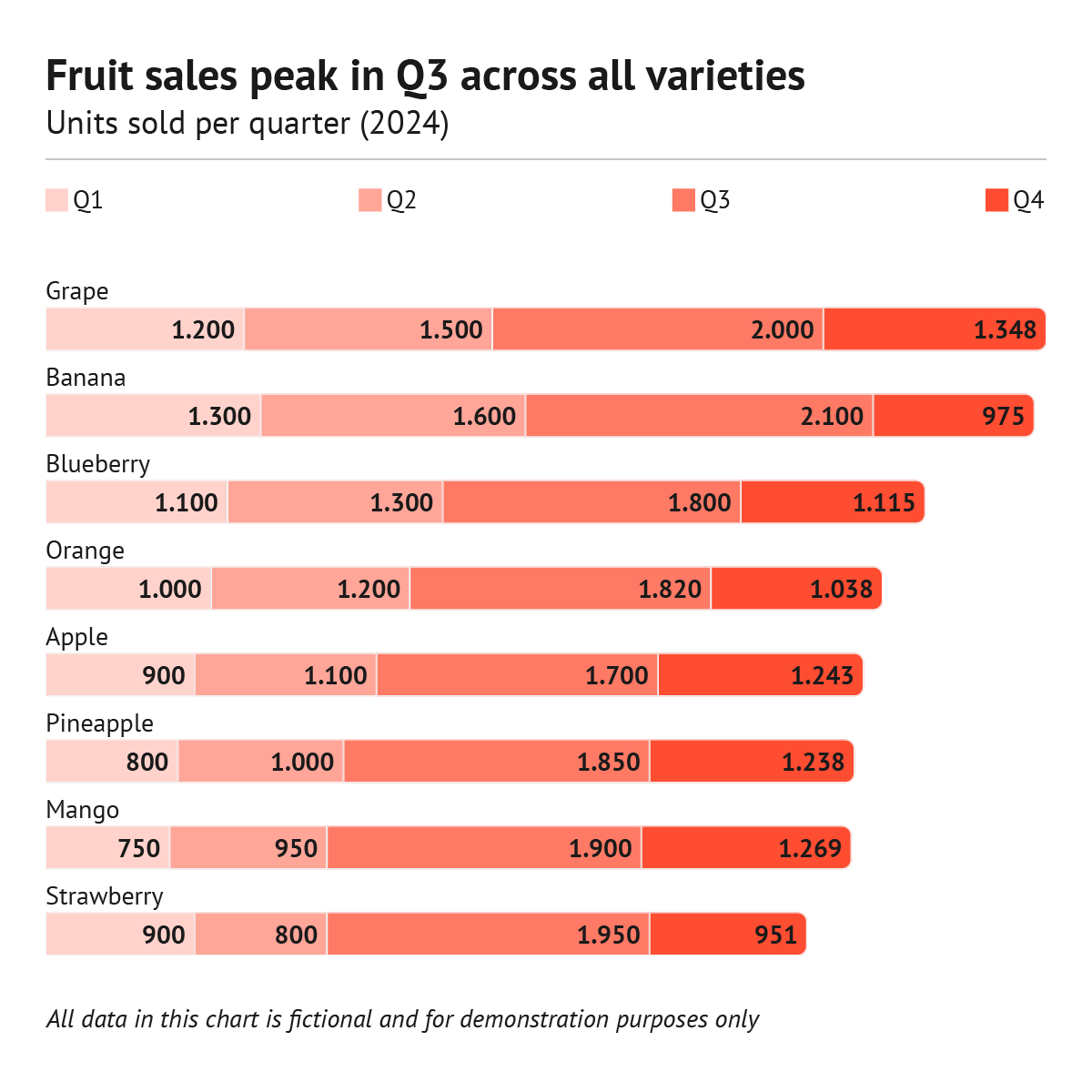
DATYLON > CHART LIBRARY > STACKED BAR CHART
What is a stacked bar chart?
Stacked bar charts are great for showing part-to-whole relationships inside one bar and for comparison between bars.
Stacked bar charts are commonly used charts due to their simplicity. It makes them a preferable option for showing part-to-whole relationships.
Stacked bar chart examples & inspiration
Scroll and click on the images below to find inspiration samples of stacked bar charts. With your Datylon account, you can use these designs, customize them and update them with new data.
Variations of stacked bar charts
The charts below are variations of a stacked bar chart. To learn how to make them with Datylon, check out the bar chart user documentation in the Datylon Help Center.
Alternatives to a stacked bar chart
Substitute your stacked bar chart with any of the charts below when you want a visual alternative that still allows you to compare values within and between categories.
Pro tips for designing a stacked bar chart
Learn how to improve the readability and visual appeal of your stacked bar chart.
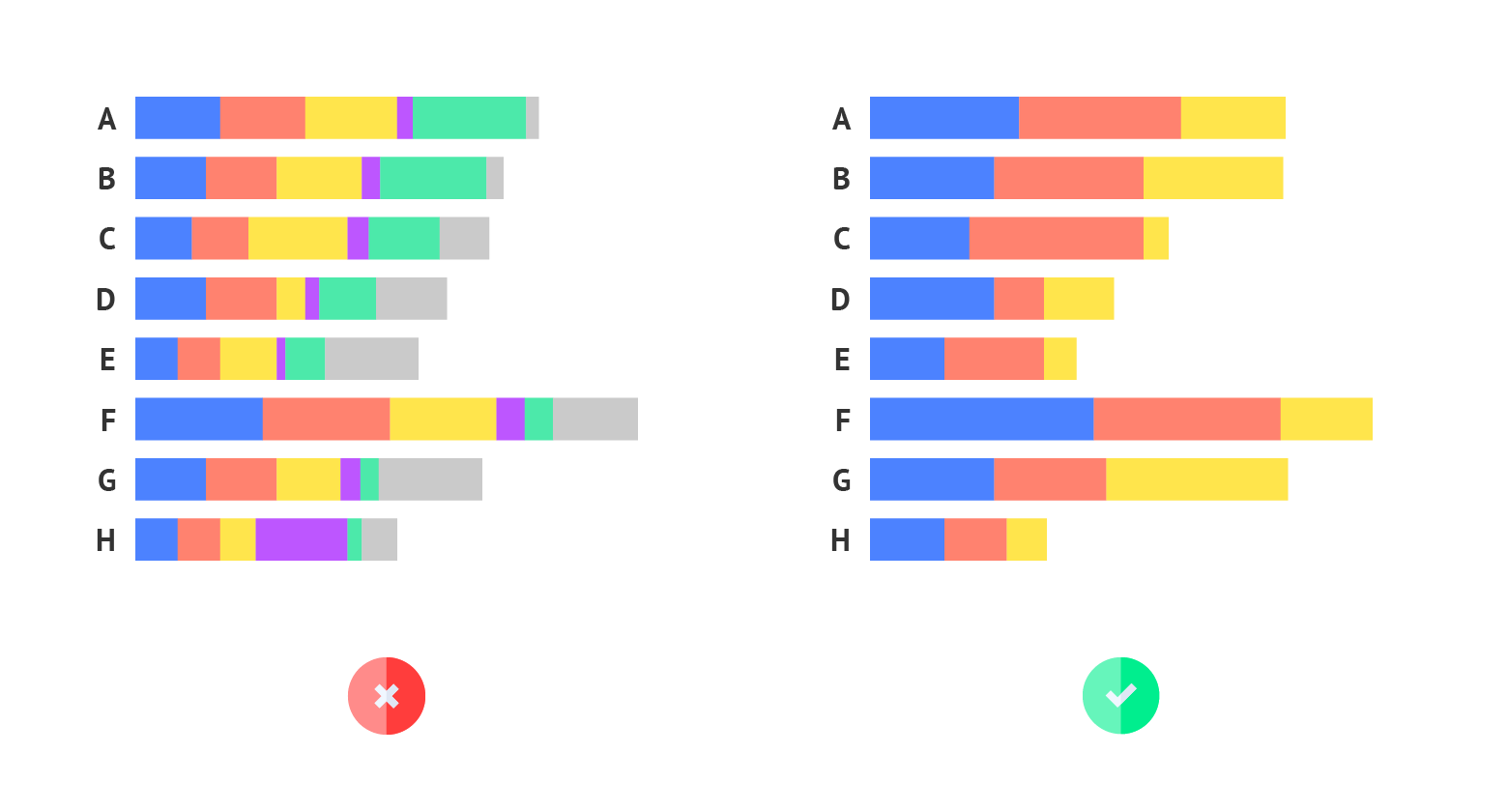
Number of segments
For stacked bar chart it's better not to use more than 3 segments per bar. Otherwise that chart becomes cluttered and it's extensively harder to read chart and compare separate segments.
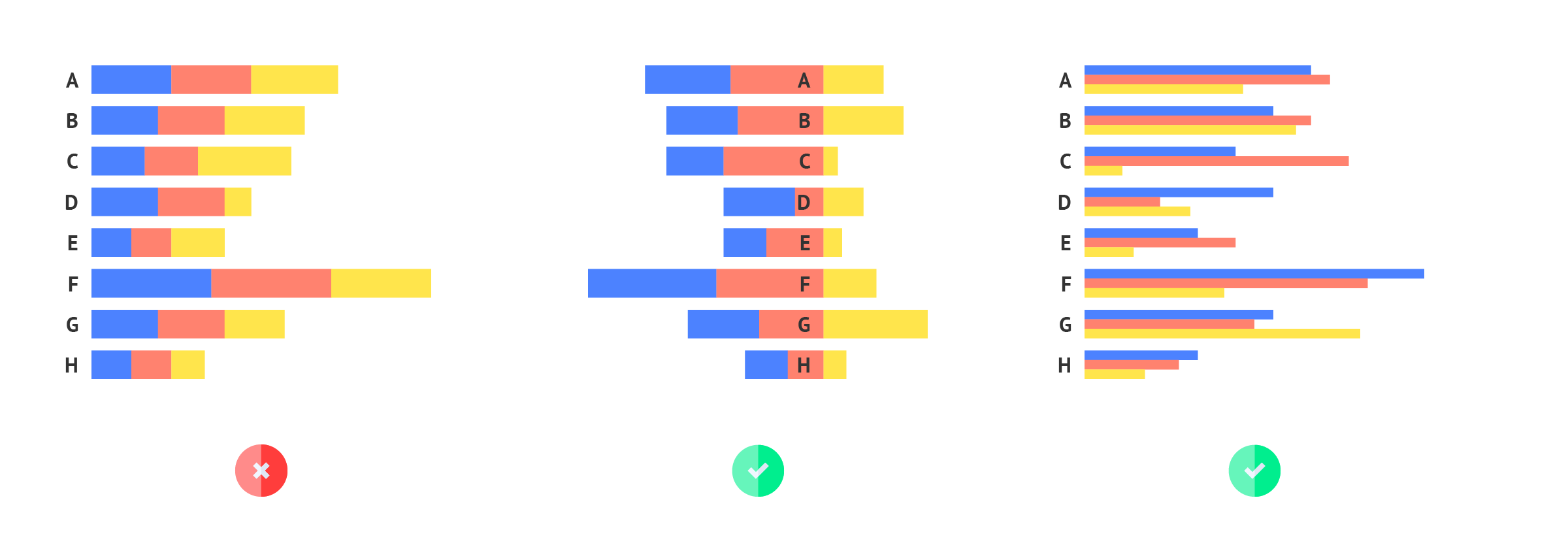
Comparing segments
In stacked bar chart it might not be easy to compare segments that are part of different bars. If you want to compare segments you might need to use diverging or grouped bar chart. Fortunately in Datylon bar chart it can be done in one click.
Negative value segments
Comparing stacked bar charts that include segments with negative values can be misleading, as it may distort the overall interpretation of the chart. If your data contains negative values in one or more segments, consider using a grouped bar chart instead. This approach provides a clearer and more accurate representation of your data in such cases.
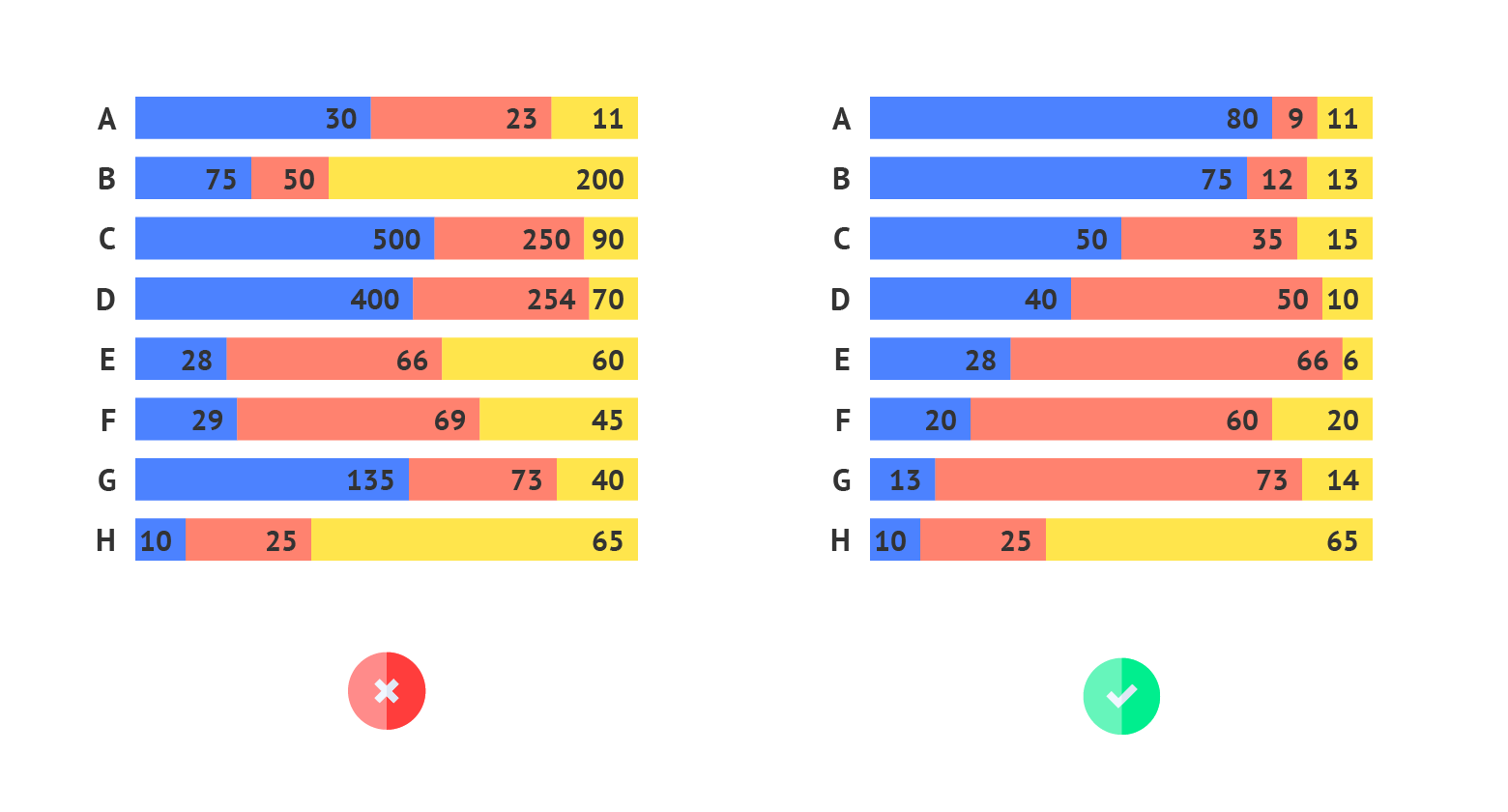
100% stacked bar chart
100% stacked bar chart allows you to compare the structure of several categories. But it's important to remember that if the range of values differs between categories there might be a misleading sense that values are similar. The recommendation is to use 100% stacked bar chart only for the cases when the total values of different categories have the same range.

